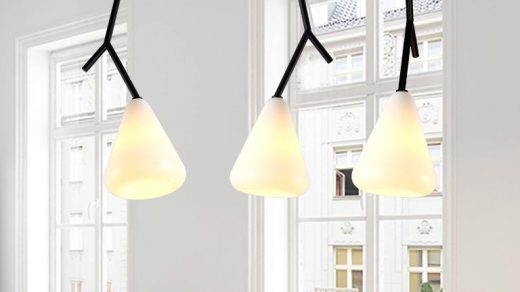Choosing the Perfect Dining Room Ceiling Light
Proper lighting in the dining room is crucial for creating the right ambiance and setting the mood for meals and gatherings. The dining room is a space where people come together to share meals, engage in conversations, and create lasting memories. Therefore, the lighting in this room should be carefully considered to enhance the overall dining experience. The right lighting can make the dining room feel warm and inviting, while also providing enough illumination for practical tasks such as eating and reading menus. Additionally, proper lighting can highlight the decor and architectural features of the dining room, adding to its aesthetic appeal.
Furthermore, the dining room is often used for various activities such as hosting dinner parties, family meals, or even working on projects. Therefore, the lighting should be versatile enough to accommodate different needs. Whether it’s a bright light for a lively dinner party or a softer light for a romantic dinner for two, the right ceiling light can help create the perfect atmosphere for any occasion. In addition, proper lighting Potlamp can also contribute to the overall design and style of the dining room, making it a more cohesive and visually appealing space.
Considerations for Choosing the Right Ceiling Light
When choosing the right ceiling light for your dining room, there are several important considerations to keep in mind. First and foremost, it’s essential to consider the size and layout of the dining room. A larger dining room may require a larger and more elaborate ceiling light fixture, while a smaller space may benefit from a more understated and compact design. Additionally, the height of the ceiling should also be taken into account when selecting a ceiling light. A higher ceiling may require a pendant or chandelier style light that can fill the vertical space, while a lower ceiling may be better suited for a flush mount or semi-flush mount fixture.
Another important consideration is the style and decor of the dining room. The ceiling light should complement the overall design aesthetic of the space, whether it’s modern, traditional, rustic, or eclectic. It’s important to choose a light fixture that enhances the existing decor and adds to the overall ambiance of the room. Additionally, the type of lighting and brightness should also be considered. Dimmable lights can offer flexibility in creating different moods and atmospheres, while adjustable directionality can provide focused task lighting when needed.
Types of Dining Room Ceiling Lights
There are several types of ceiling lights that are commonly used in dining rooms, each offering its own unique benefits and aesthetic appeal. Chandeliers are a popular choice for larger dining rooms, adding a touch of elegance and sophistication to the space. They come in a variety of styles and designs, from traditional crystal chandeliers to more modern and minimalist options. Pendant lights are another popular choice, offering a more contemporary and versatile option for dining room lighting. They come in various shapes, sizes, and materials, making them suitable for a wide range of design styles.
Flush mount and semi-flush mount ceiling lights are ideal for dining rooms with lower ceilings or for those who prefer a more understated lighting option. These fixtures provide a sleek and streamlined look while still offering ample illumination for the dining area. Another option is recessed lighting, which can provide a clean and modern look while also offering flexibility in terms of placement and directionality. Finally, track lighting can be a great choice for those who want to highlight specific areas of the dining room, such as artwork or architectural features.
Matching the Ceiling Light to the Dining Room Decor
Matching the ceiling light to the dining room decor is essential for creating a cohesive and visually appealing space. The style and design of the light fixture should complement the overall aesthetic of the room, whether it’s traditional, contemporary, industrial, or eclectic. For example, a rustic farmhouse-style dining room may benefit from a wrought iron chandelier or pendant light with a distressed finish, while a modern and minimalist space may be better suited for a sleek and streamlined flush mount fixture.
In addition to style, it’s also important to consider the materials and finishes of the ceiling light in relation to the rest of the decor. For instance, if the dining room features brass accents and warm wood tones, a brass or gold-finished light fixture may tie everything together seamlessly. On the other hand, if the decor is more industrial with exposed brick and metal elements, a black or matte-finished pendant light may complement the space beautifully. Ultimately, choosing a ceiling light that harmonizes with the existing decor will help create a cohesive and well-designed dining room.
Sizing and Placement of the Ceiling Light
The size and placement of the ceiling light are crucial factors to consider when designing the lighting for a dining room. The size of the light fixture should be proportionate to the size of the dining table and the overall scale of the room. A general rule of thumb is to choose a light fixture that is about one-third to one-half the width of the dining table. This ensures that the light provides adequate illumination for the entire table while also creating a balanced visual impact in the space.
In terms of placement, it’s important to consider the height at which the ceiling light will be installed. For chandeliers and pendant lights, they should typically be hung about 30 to 36 inches above the dining table to provide ample illumination without obstructing views or creating glare. For flush mount or semi-flush mount fixtures, they should be installed at an appropriate height to ensure even distribution of light throughout the dining area. Additionally, it’s important to consider any other sources of natural or artificial light in the room to ensure that the ceiling light complements and enhances the overall lighting scheme.
Energy Efficiency and Functionality of the Ceiling Light

In addition to aesthetics, it’s important to consider the energy efficiency and functionality of the ceiling light when choosing the right fixture for a dining room. LED lights are an excellent choice for those looking to reduce energy consumption and lower utility costs while still providing ample illumination. LED lights are long-lasting and produce minimal heat, making them an eco-friendly and cost-effective option for dining room lighting.
Functionality is another important consideration when selecting a ceiling light for the dining room. Dimmable lights offer flexibility in creating different atmospheres and moods for various occasions, while adjustable directionality can provide focused task lighting when needed. Additionally, some ceiling lights come with smart technology features such as remote control operation or compatibility with home automation systems, adding convenience and ease of use to the dining room lighting.
Budgeting for the Perfect Dining Room Ceiling Light
When budgeting for a new ceiling light for the dining room, it’s important to consider both upfront costs and long-term expenses. The initial cost of the light fixture should be weighed against its quality, durability, and design appeal. Investing in a high-quality fixture may require a larger upfront investment but can ultimately save money in replacement costs and maintenance over time.
Additionally, it’s important to consider any additional expenses such as installation fees or potential modifications to electrical wiring or ceiling mounts. It’s also worth considering long-term energy costs when choosing an energy-efficient lighting option such as LED lights. While these fixtures may have a higher initial cost, they can lead to significant savings on energy bills over time.
Furthermore, it’s important to factor in any potential resale value that a well-designed and high-quality ceiling light can add to the home. A thoughtfully chosen fixture can enhance the overall appeal of the dining room and contribute to its value as a selling point in the future. Ultimately, budgeting for the perfect dining room ceiling light involves considering both immediate costs and long-term benefits to make an informed investment in enhancing the dining experience and overall aesthetic appeal of the space.



